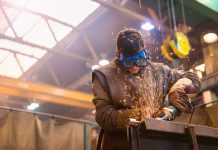
“Tech layoffs: Companies that announced job layoffs this week.” “CEO is facing a morale crisis after multiple layoffs.” “First Quarter 2023: Layoff Tracker.”
These headlines form just a small part of a long list compiled from the last few months and years of news headlines. But what if I told you that it’s not all doom and gloom? By sharply analyzing some of the tools made available in the pandemic and combining that with business acumen honed over the years working both for and in the hospitality and service industries – my team has cracked a code.
In a world that feels like the job market is an obstacle, my team has found incredibly high performers dispersed across all four corners of the country, and together, we are growing the bottom line of our organization. The formula we have created is one anyone can use. For any training team or HR department that has been looking for a blueprint, we are happy to share.
At our experiential marketing firm based in New York City, brands hire us to represent them and do one of the hardest things in marketing and sales: increase preference for a particular product over any other option on the market.
Our client list is wide-ranging, from spirits to banking, food brands, and clothing. Our employees must be creative, action-oriented, able to think on their feet, and personable – all at the same time. Moving a customer closer to advocacy takes a particular type of personality and isn’t for the faint of heart. It requires a solid strategic approach and data science on the back end. On the front end, it takes an experience that makes a consumer think they have been missing something by not engaging before.
It Starts with Investing in a Deep Recruitment Effort
As any HR team knows, recruiting a strong team requires investment of time and money, both of which are expensive. Having a C-suite that knows and understands this makes an enormous difference in ensuring that the right hire is made so that the training effort is worth it.
We work incredibly hard to hire talent, not just for the job we can offer on that particular day but for what we believe we will need in the future. To do this, we’ve had to work as a leadership team to find areas of common ground:
- We are comfortable with remote/hybrid work. We have found some of our best employees near and far from our corporate headquarters. Allowing for various styles of work post-pandemic has been key for finding and retaining top talent. If we don’t always see them in the office – that is okay.
- We don’t play hardball with wages. When you compensate people well, they bring their A-game because it’s worth it to do so. An employee keeping one eye open for the same job with a better salary does not help with retention or performance.
- Most importantly, we take our time. We book interviews to understand if hires will be both a professional and personal fit for our office and our clients. As an agency that is intertwined with our client base, we ask prospects to meet with clients as well since they will be representing them, too. Even if someone is perfect on paper, if we don’t feel they can blend seamlessly from a cultural standpoint, we won’t hire them.
This may feel like common sense on its surface, but it’s not. As I talk to my colleagues in Learning and Development and HR, it feels revolutionary because this type of recruitment takes deep work. We once calculated that for every job we post, it takes 24 hours of time just to get the front-end processes around that posting completed – to say nothing of the interview process, feedback rounds, offer extension and onboarding. However, we have found that not only has this grown our talent pool exponentially, but our retention rates and customer satisfaction are higher. As proof, we had such a good 2022 with one of our spirit clients that they asked us to remove all competitors from our portfolio to work together exclusively. That’s how well we represented their brands.
Mixing the Old School with the New School
Prior to COVID, our training programs were in person. As COVID changed how we could conduct this work, we realized we needed to innovate, and the pandemic provided a moment to slow down and fine tune our training and recruitment model. We wound up with a good mix of in-person and virtual tools that got us through that time and became a model that we could use post-COVID, too.
We updated physical tools, like training books, to be offline guides to learning about a brand and how we drive consumer preference through different spirits’ qualities. We then took advantage of software like Zoom to mimic in-store/on-street interactions, like we would have with in-person training. Recruits were expected to dive into offline learning and then come prepared to our in-person trainings ready to practice what it would look like in the world. We noticed that those who were serious came prepared. Those who were not were quickly exited from the process. It became its own method of weeding out the wrong candidates.
This training method resulted in training 900 people in 2022 and growing our book of business to 25 brands. When many were still figuring out what “post-COVID” was, we were already expanding to understand how to replicate this model across industries.
Moving Forward
With the world mostly balanced again, we have incredible ways of working that don’t just make us money and benefit clients. We have been able to attract and retain great workers and stay current, if not slightly ahead, of the “new normal” for work. As any HR professional knows – that’s a powerful place from which to operate.



